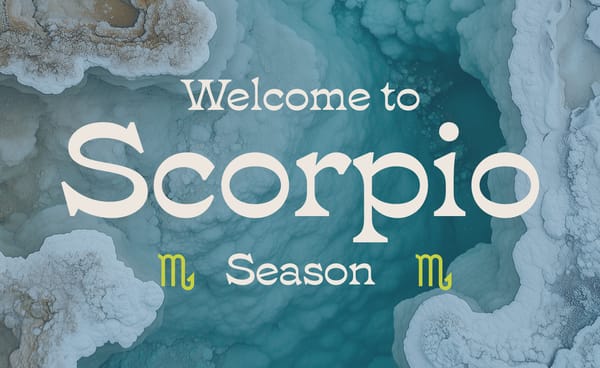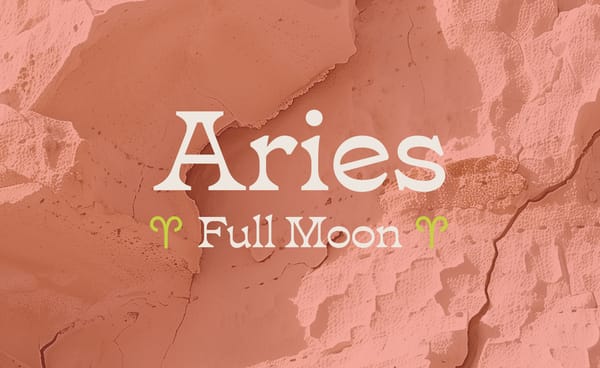Astro 101: The Birth Chart

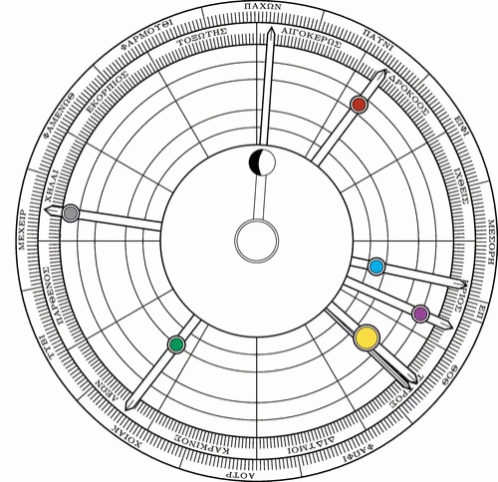
What is your birth chart?
Astrology is interpreting positions of the moon and planets relative to a position on Earth. A Natal (Birth) Chart maps the positions at a particular place and time. Astrology is based on fully deterministic input but is extremely human in how it is interpreted.
A birth chart, also known as a natal chart, is a circular map that represents the celestial positions at the precise moment, and location, of an individual's birth. At the heart of the birth chart lies a symphony of planetary energies, zodiac signs, and astrological houses, each contributing to the intricate tapestry of one's personality, destiny, and life experiences.
The first documented evidence of Astrology can be traced back to 2000 BCE in Mesopotamia. Back then it was used to predict crops or pregnancy. Modern Astrology is based on how humans have learned more about what certain positions/aspects mean over thousands of years.
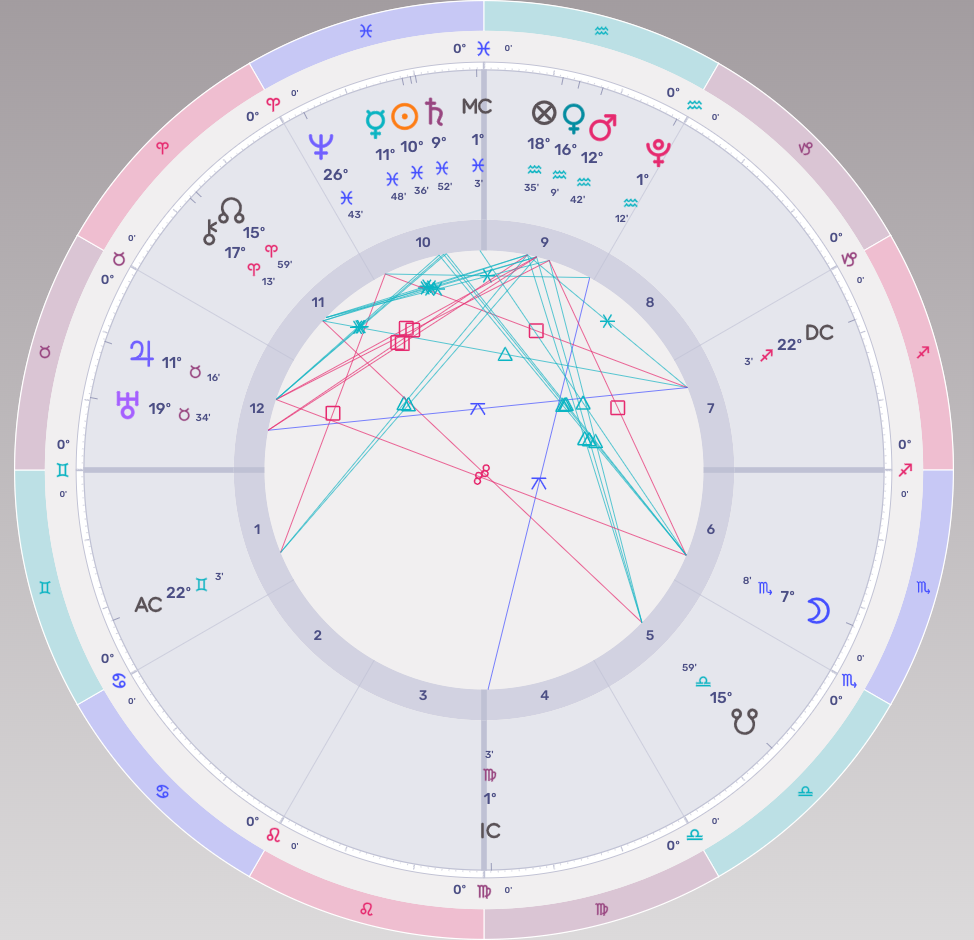
Components of a Birth Chart
The birth chart is informed by three primary elements:
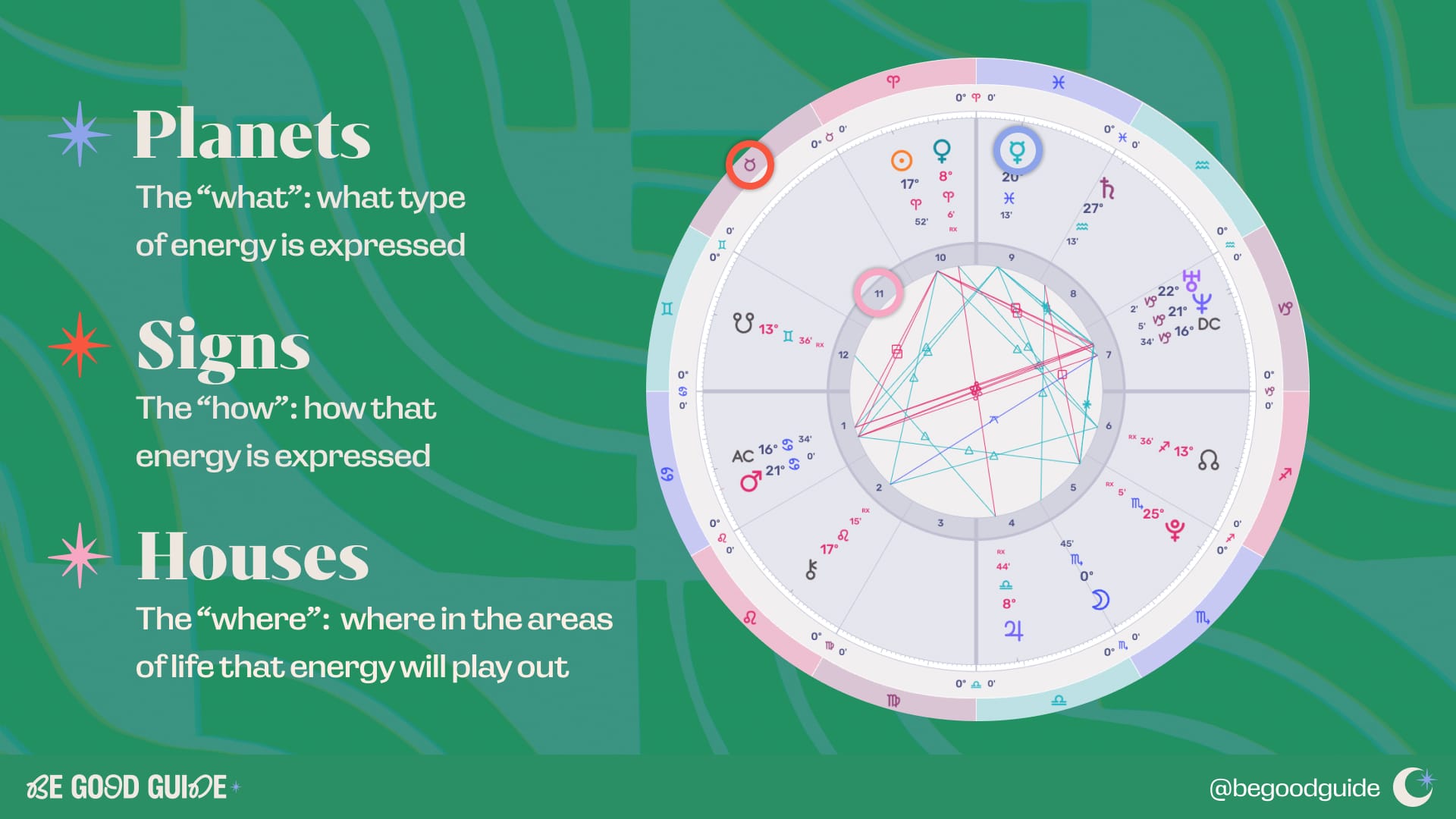
- Planets/Luminaries/Chart Elements: These celestial bodies represent different facets of human experience, from the ego-driven Sun to the emotional Moon, and the transformative power of Pluto. Each planet's position within the zodiac signs and houses reflects its unique influence on an individual's life. The Sun and Moon are considered Luminaries and there are other entities that can show up on a chart including asteroids, calculated chart points based on the horizon, etc.
- Zodiac Signs: The zodiac is divided into twelve signs, each characterized by distinct qualities, traits, and archetypal energies. The placement of planets within these signs provides insight into how their energies are expressed in specific areas of life.
- Houses: The birth chart is segmented into twelve houses, each representing different aspects of life, such as identity, relationships, career, and spirituality. The position of planets within these houses illuminates the areas where their energies are most active and significant. Read more in depth about houses.
What information do I need to get my birth chart?

To generate a birth chart, also known as a natal chart or horoscope, several pieces of information are required to accurately map the positions of celestial bodies at the moment of an individual's birth. Here's a breakdown of the essential data needed:
Date of Birth:
The date of birth provides the foundation for calculating the positions of celestial bodies relative to the Earth's orbit around the Sun. It serves as the starting point for generating the birth chart.
Time of Birth:
The time of birth is crucial for determining the precise positions of the Sun, Moon, planets, and other celestial points at the moment of birth. Even small variations in birth time can result in significant differences in the placement of planets and astrological points within the chart.
Place of Birth:
The geographical coordinates (latitude and longitude) of the place of birth are necessary to calculate the positions of celestial bodies relative to the Earth's surface. Different locations on Earth experience celestial events, such as sunrise and planetary alignments, at different times. Most chart calculators generate the latitude and longitude based on the city, state, country you were born in.
Why is my birth time so important?
The celestial bodies are in constant motion, as is the ever-changing canvas of the sky, driven by the Earth's daily rotation. Your birth chart serves as a snapshot frozen in time, capturing the cosmic arrangement at the precise moment and location of your birth. It's imperative to have the exact time, date, and place of birth for an accurate interpretation.
For instance, the Moon transitions signs every 2-3 days, so your birth time determines which sign it occupied when you were born. Similarly, your rising sign, or ascendant, changes rapidly, with a new sign rising every 1-2 hours. This sign, intimately linked to your body, vitality, and self-perception, defines the starting point of your chart and influences the allocation of subsequent houses.
The significance of these astrological anchors, including the Midheaven (MC), Imum Coeli (IC), and Descendant (DC), hinges on the precision of your birth data.
While there are methods to work with incomplete birth information, obtaining the most accurate analysis often requires thorough investigation, particularly for those without access to detailed records or whose circumstances make communication with caregivers challenging. Age can also play a role, affecting the availability and reliability of birth records across different institutions and regions.
So, what if I don't know my birth time?

Leave No Stone Unturned:
If you're on a quest for your birth time, leave no avenue unexplored. Often, the birth time isn't listed on the short-form birth certificate found at home. This abbreviated version usually contains essential details like your birthdate but rarely includes the time. The comprehensive long-form birth certificate, typically recorded at the hospital, holds more detailed information, including the birth time.
Contact the local government office overseeing birth records, which might be known as the ministry, department, or office of "vital statistics." Before ordering the certificate, ensure that the birth time is included. With astrology gaining popularity, it's a common inquiry, so don't hesitate to ask. You can also inquire directly with the hospital where you were born, as they might keep records or direct you to the appropriate authority.
Even if caregivers or parents recall the birth time, securing the long-form certificate is advisable. Memories can be unreliable, and the rising sign can shift within minutes, emphasizing the need for precision.
Go Digging:
Delve into your personal archives—baby books, photo albums, attic boxes, scrapbooks, family bibles, and more. There's a chance the long-form certificate or a written record of the birth time is tucked away amidst cherished mementos. A meticulous caregiver, parent, or grandparent might have noted the time in a diary or keepsake.
Ask Around:
Reach out to family members, caregivers, or anyone present at your birth who may recall the time. While exact documentation is preferred, even an approximation can be helpful in identifying your Moon sign and narrowing down possibilities for the rising sign.
Rectify Your Chart:
As a final resort, consider chart rectification by consulting an astrologer specializing in this technique. While not an exact science and involving some trial and error, it can be effective for many individuals. Seek recommendations from your network or online communities to find a trusted astrologer skilled in rectification, as this process requires expertise and precision.
What if I have a rough idea of my birth time?

If you've managed to narrow down your birth time to a 1-2 hour window, you're off to a good start. Within this timeframe, you should be able to identify your Moon sign and possibly your rising sign, although not with exact degrees.
Using an online chart tool, input the earliest and latest possible times to observe the rising sign. If it remains consistent for both options, you've struck gold and identified your rising sign. If not, you've narrowed it down to two potential signs. Take some time to explore the characteristics of both, and consider asking friends and family for their perceptions to help you find the best fit.
How can I work with Astrology if I don't have my birth time?
If you're hitting dead ends with finding your birth time, don't fret; you can still delve into your chart, albeit with some limitations. Without the birth time, you won't have your ascendant or precise house placements. Instead, focus on the planetary positions in signs and their interactions.
Simply enter your birthdate into a chart generator and set the time to 12 PM. This will reveal the planetary placements, excluding potentially the Moon if it shifted signs on your birth date. Keep in mind, this method disregards the rising sign, house placements, as well as the MC, IC, and DC.
Alternatively, you can approximate your rising sign by setting your Sun as the ascendant. This approach mirrors how pop astrology or magazine horoscopes are crafted. Begin by searching "What time was sunrise" on your birth date and location to align your Sun sign with the rising sign. If your rising sign differs from your Sun sign, adjust the time by adding or subtracting five minutes until they match. While having an exact birth time ensures accuracy, this technique provides valuable insights and is more methodical than selecting a random time.
Hope this helps kickstart your astrology journey!



